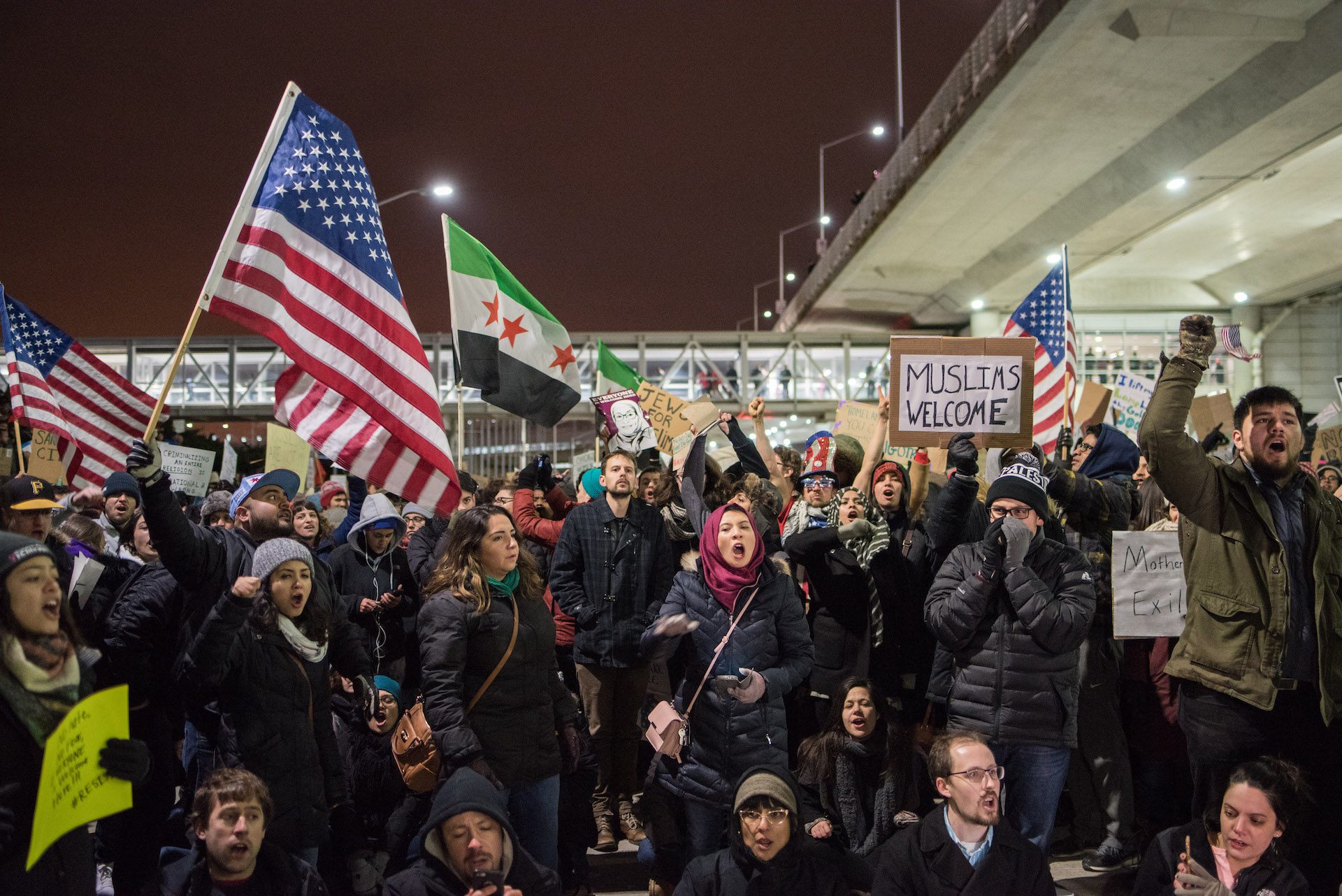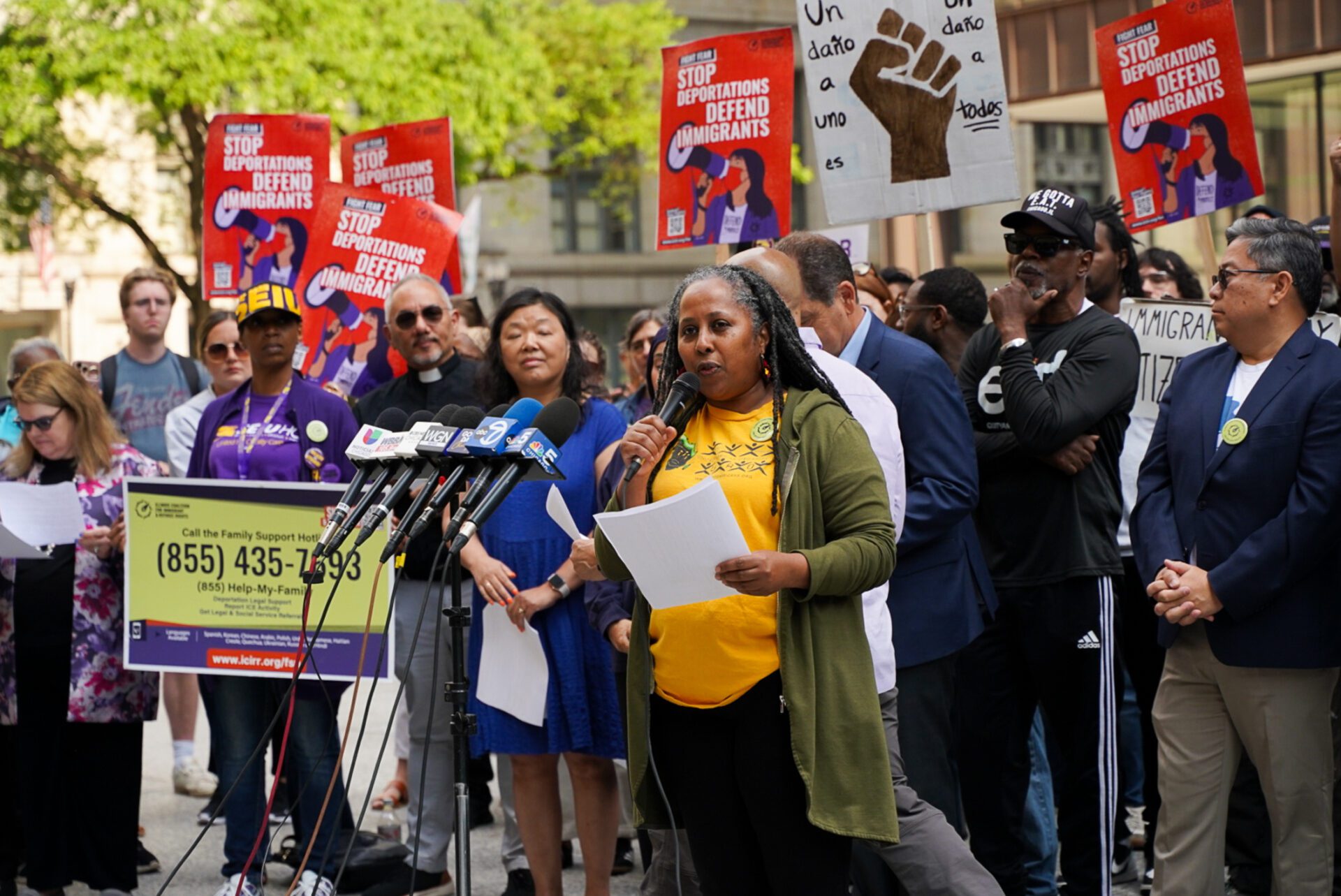 Photo by Max Herman
Photo by Max HermanTrump’s latest executive order blocks immigrants and visitors from 12 countries and imposes partial entry restrictions on seven others.
President Donald Trump’s sweeping new travel ban took effect on Monday, which blocks immigrants and travelers from 12 countries and partially restricts entry from seven more.
Trump announced the policy last week, calling it a national security measure in the wake of a recent attack at a pro-Israel rally in Boulder, Colorado.
News that puts power under the spotlight and communities at the center.
Sign up for our free newsletter and get updates twice a week.
In a video statement, Trump claimed that foreign nationals who were not properly vetted posed “extreme dangers.” He cited an annual Homeland Security report in his decision. “We don’t want them,” Trump said.
The latest ban primarily impacts African and Middle Eastern countries. The man charged in the Colorado attack is from Egypt, which was not included in the travel ban list.
Trump said that some countries on the list had “deficient” screening for passports or civil documents, or have historically refused to accept back their “removable nationals.”
Borderless Magazine breaks down what to know about the latest travel ban.
Which countries are impacted?
Trump’s new proclamation bars both immigrants and non-immigrants from entering the U.S. from 12 African and Asian countries. Those countries are Afghanistan, Myanmar, Chad, the Republic of Congo, Equatorial Guinea, Eritrea, Haiti, Iran, Libya, Somalia, Sudan and Yemen.
In addition, it imposes partial travel restrictions on nationals from Burundi, Cuba, Laos, Sierra Leone, Togo, Turkmenistan and Venezuela.
Why are these countries selected?
As president, Trump said he must “protect the national security and national interest of the United States and its people.” Nationals of some countries on the list pose “significant risks of overstaying their visas,” and often “exacerbate other risks related to national security and public safety.” Some of these countries, he stated, had “deficient” screening or refused to take back their citizens.
However, NPR reported that the number of people overstaying their visas from these countries is small compared to travelers from Europe and other countries who overstay their visas.
What Does This Mean for Travelers and Visa Holders?
Travelers from impacted countries who hold valid visas issued before the effective date should still be allowed entry, according to a report from the Associated Press.
However, visa applications from citizens of banned countries will be rejected starting June 9, unless the applicant qualifies for one of a few narrowly defined exemptions. Approved applications still in process will also be denied.
Who’s Exempt?
The proclamation outlines a range of exemptions. Among those not affected by the travel ban are:
- U.S. lawful permanent residents (Green Card holders)
- Dual nationals traveling on a passport from a country not on the banned list
- Athletes and their coaches are traveling for major international sporting events
- Afghan nationals with Special Immigrant Visas
- Certain religious and ethnic minority immigrants from Iran, facing persecution
- Certain foreign national employees of the U.S. government with their immediate family members
- Diplomats and foreign government officials on official visits
- Immediate family members of U.S. citizens or green card holders with valid immigrant visas (IR-1/CR-1, IR-2/CR-2, IR-5) with clear and convincing evidence of identity and family relationship (e.g., DNA)
- Children adopted by U.S. citizens
- Foreign nationals with specific non-immigrant visas
Case-by-case exceptions determined by the Secretary of State for those who serve “a United States national interest.”
How is this different from the first ban?
During his first term, Trump issued a travel ban that mainly affected Muslim countries, including Iran, Libya, Somalia, Syria and Yemen.
These restrictions initially targeted predominantly Muslim countries, sparking widespread outcry and prompting legal challenges, many of which were later struck down or rescinded under President Joe Biden.
The ban expands on the controversial travel restrictions issued during Trump’s first term.
Are there any legal challenges?
No lawsuits have been filed as of Tuesday.
“It’s plainly written in light of the [Supreme Court’s] previous ruling,” Aziz Huq, a constitutional law scholar at the University of Chicago, told the Washington Post that the Trump administration had learned from its mistakes. “The decision from 2018 makes the exercise of this power more difficult to challenge than it was previously.”
What are advocates saying?
The travel ban has been condemned by legal rights and advocacy groups, calling it discriminatory and xenophobic.
“This policy is a dangerous revival of xenophobic and racist immigration policies,” Fasika Alem, Programs Director for United African Organization, said at a press conference Monday. “[It] undermines America’s values of fairness… and human dignity.”

Nadiah Alyafai, a Yemeni American organizer with Arab American Action Network (AAAN), said the new travel ban created “heightened fear and uncertainty” and was spurring “attacks” on communities from listed countries. “We are witnessing a deliberately targeted effort to undermine our rights, our freedoms and our dignity.”
Executive Director for RefugeeOne in Chicago, Melineh Kano, said the organization opposed the first travel ban and the new order as it “indiscriminately bars entire nationalities, largely taking aim at Black, brown and Muslim people in countries experiencing insecurity and conflict.”
Fatema Hosseini is a Roy W. Howard Investigative Reporting fellow who covers immigrant communities for Borderless Magazine. She can be reached at [email protected].


